The John Muir Trail (JMT) is well known around the world for its unparalleled beauty and grandeur. What is not widely spoken about is the ability of this popular backpacking destination to humble strong and experienced hikers. The combination of long ascents, high altitude, and isolation from exit points combine to test one’s resolve.
Glen Pass
The JMT has eight major passes over 11,000 feet and several lesser passes. As the typical hiker progresses from north to south, the passes get higher, steeper, and more exposed. Forester Pass, at 13,200 feet, gets most of the attention, but its neighbor to the north, Glen Pass, is actually much more of a challenge.
Glen Pass begins in a very quaint manner from the beautiful Rae Lakes, ascending perfect steps formed from granite. The further trail travels from Rae Lakes, the more rugged the trail becomes. Soon, the hiker is above tree line, exposed to the relentless Sierra sun and winds. The condition of the trail deteriorates as the tread steepens and the footing becomes looser. Early on, the views are captivating and distracting. As the hiker climbs, the only view is the rough trail immediately in front. A final traverse puts the hiker on the knife like ridge of Glen Pass. If the winds are not howling and it is not a summer snowstorm, enjoy the view, as the descent is no easier.
Glen Pass descends to the south very steeply, with loose rock and extreme exposures. A slip here will definitely end the trip. The descent is better described as a scramble, and you will likely be searching for handholds. Believe it or not, sure footed mules cross this pass daily.
The obvious challenges of Glen Pass are compounded early season and in heavy snow seasons, such as 2018-19.
Glen Pass makes all the other passes seem easy, and after this, Forester Pass is a bit of a letdown.
Muir Trail Ranch to Evolution Lake
The climb out of Muir Trail Ranch (MTR) is not the steepest, not the longest, section of the JMT. It may argued that is the prettiest section of the JMT. The challenge here is the load the typical hiker will be carrying.
MTR is a resupply stop for the majority of JMT backpackers. Supplies that have been shipped here are picked up and the backpacker is equipped to complete the balance of the JMT, normally about ten days. Assuming two pounds of food per day per hiker, backpacks just added twenty pounds. MTR is low on the San Joaquin River at 7,800 feet, and Evolution Lake is at 10,800 feet, setting up a 3,000 foot climb with backpacks that are filled to capacity.
The climb begins gently, following the river, but 6.5 miles it splits away, following Evolution Creek. The climb steepens and is relentless. Fortunately, the cascades are amazing and the scenery is jaw dropping. Which is what your jaw s doing anyhow, as you are gasping for oxygen in the rapidly thinning air.
The destination at Evolution Lake is well worth the efforts. Many exposed campsites are near the lake shore. On the north end of the lake, there are a couple premium sites tucked in white park pines and protected from adverse weather.
Mount Whitney Descent
Now this is sure to be controversial. After summiting Mount Whitney, hikers retrieve their stowed backpacks at Trail Junction, climb the final insulting 200 vertical feet to Trail Crest at 13,658 feet, and begin the long decent to Trail Camp. Yes, it is all downhill. Yes, your backpack is practically
At Trail Camp, you think the worst is behind and you can already taste the Whitney Portal burger and cold beer. Unfortunately, you are now beginning the longest 7 miles on the JMT. This is not relaxing hiking. Footing is often loose, there are immeasurable steps, and there are several small stream crossings.
Miles turn into hours, and it feels no closer to the trail’s end. After three weeks on the JMT, the mind is focused burgers, beers, beds, and baths. Long, gradual switchbacks are followed be more long, gradual senseless switchbacks, making what should be a quick decent into a long plodding march. Suddenly, when all hope is gone, a flash of a reflection from a windshield and the final traverse takes you into Whitney Portal.
Hitchhiking from Whitney Portal to Lone Pine is a cinch, as most day visitors are aware of the need for rides.


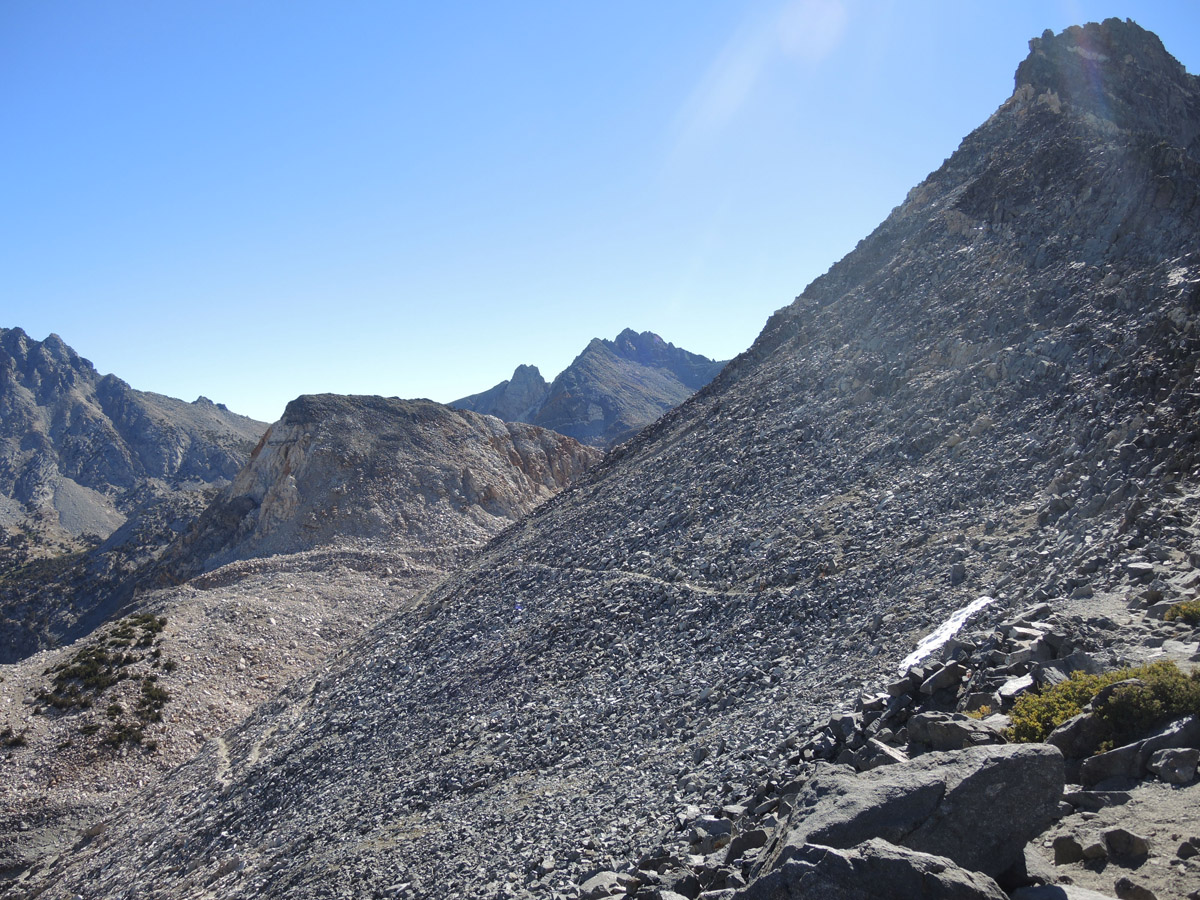
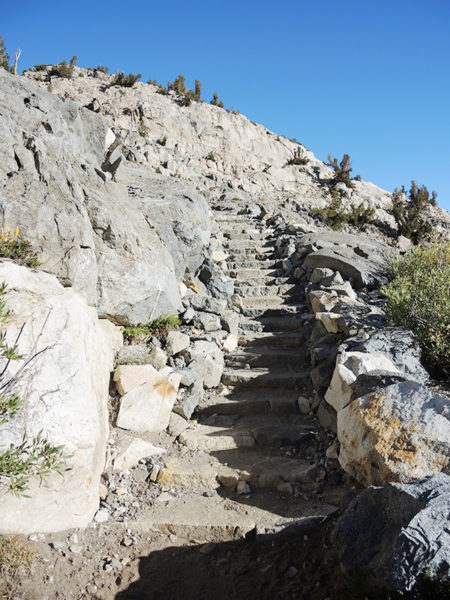
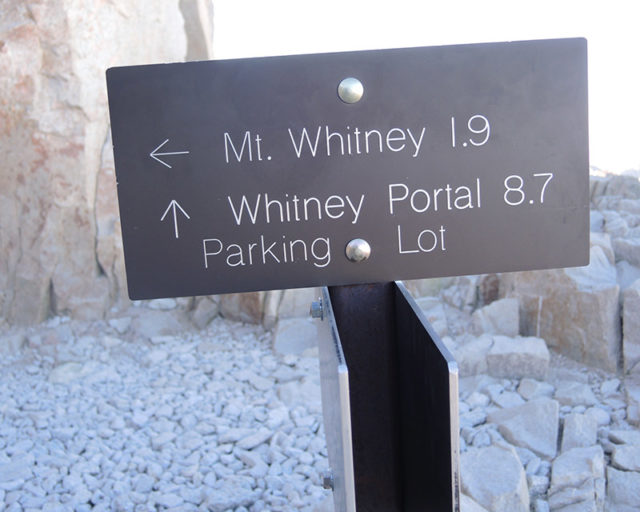
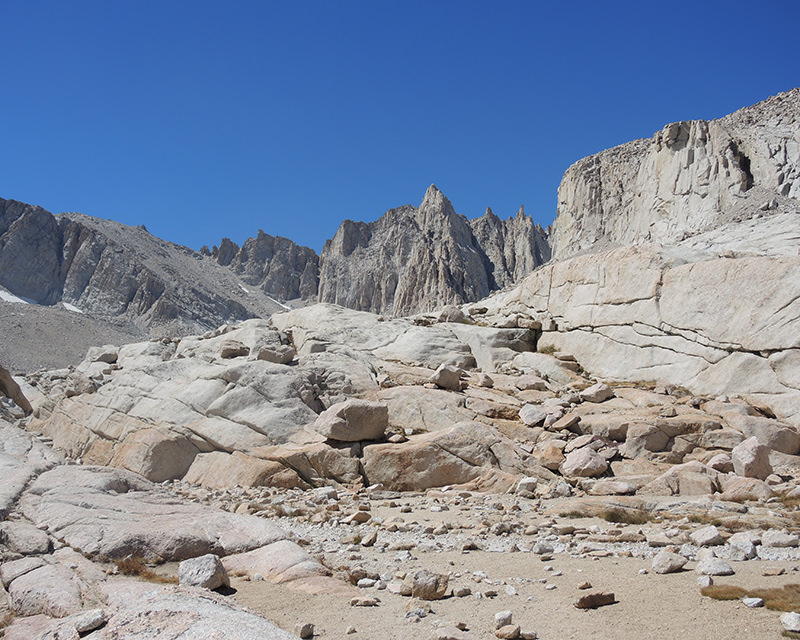


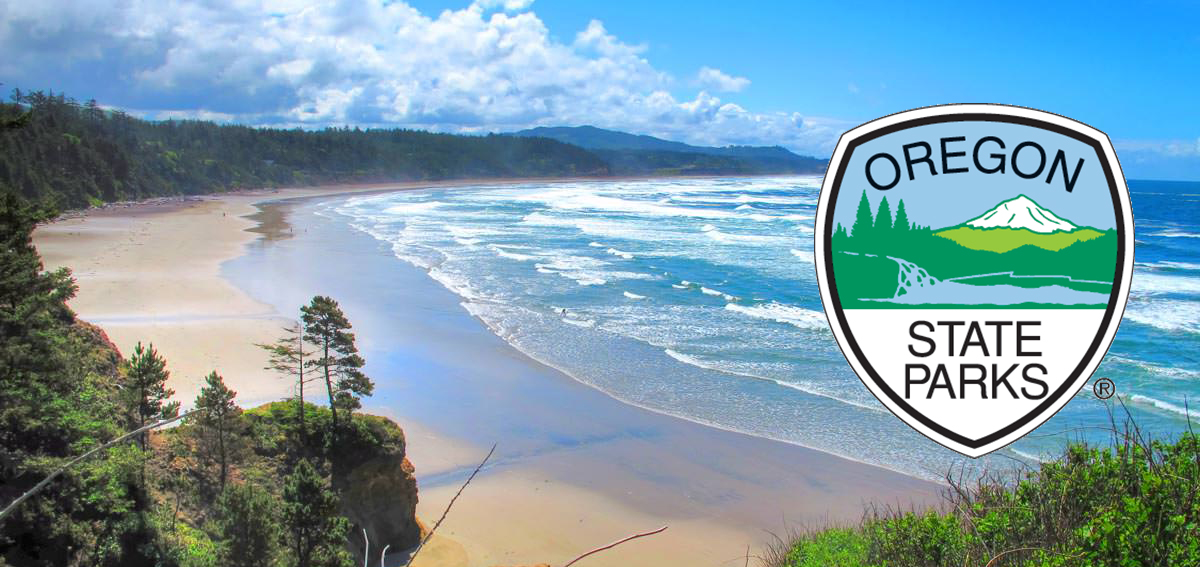


Responses